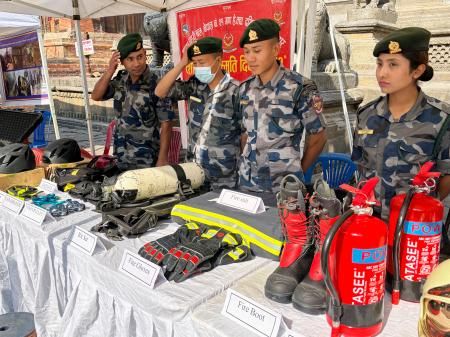Nepal's Earthquake: Ten Years On – Resilience, Reconstruction, and the Road Ahead
Ten years after the devastating 2015 Nepal earthquake, the nation continues its journey of recovery and resilience. The 7.8 magnitude quake, and subsequent aftershocks, left an indelible mark, claiming thousands of lives and causing widespread destruction. This article explores the progress made in the decade since, the challenges that remain, and the ongoing efforts to build a more resilient Nepal.
The Scars Remain: Remembering the Devastation
The April 25th, 2015, earthquake and its aftermath remain etched in the collective memory of Nepal. The UNESCO World Heritage sites of Kathmandu Valley – Boudhanath Stupa, Pashupatinath Temple, and Kathmandu Durbar Square – suffered immense damage. Countless homes were reduced to rubble, leaving hundreds of thousands displaced. The death toll exceeded 9,000, with injuries numbering in the tens of thousands. The earthquake exposed deep vulnerabilities in Nepal's infrastructure and building codes, highlighting the urgent need for improved disaster preparedness.
Key Impacts of the 2015 Earthquake:
- Massive loss of life and displacement: Thousands perished, and hundreds of thousands were left homeless.
- Infrastructure damage: Widespread destruction of homes, schools, hospitals, and vital infrastructure.
- Economic disruption: Significant impact on Nepal's economy, particularly in the tourism sector.
- Environmental consequences: Landslides and avalanches further exacerbated the devastation.
Reconstruction and Recovery: A Decade of Progress
The international community responded with substantial aid and support following the earthquake. Billions of dollars were pledged for reconstruction efforts, focusing on housing, infrastructure, and cultural heritage preservation. While significant progress has been made, the process has been slow and complex, hampered by bureaucratic hurdles, logistical challenges, and political instability.
Key Achievements in Reconstruction:
- Housing reconstruction: A significant number of homes have been rebuilt, although challenges remain in reaching remote communities.
- Infrastructure improvements: Progress has been made in upgrading roads, bridges, and other vital infrastructure.
- Cultural heritage preservation: Many historical sites have undergone restoration, though the work is ongoing.
- Improved building codes: New building codes have been implemented to enhance earthquake resilience.
Challenges That Persist: The Road Ahead
Despite significant progress, Nepal continues to grapple with the long-term consequences of the earthquake. Many challenges remain, including:
- Incomplete reconstruction: Many communities still lack adequate housing and infrastructure.
- Economic vulnerability: The earthquake's impact on the economy persists, particularly in rural areas.
- Disaster preparedness: While improvements have been made, further strengthening of disaster preparedness mechanisms is crucial.
- Addressing systemic issues: Corruption and bureaucratic inefficiencies have hindered the reconstruction process.
Lessons Learned and Future Preparedness
The 2015 Nepal earthquake served as a stark reminder of the importance of investing in disaster preparedness and resilient infrastructure. The experience has highlighted the need for:
- Strengthening building codes and enforcement: Implementing and strictly enforcing robust building codes to ensure earthquake resilience.
- Investing in early warning systems: Developing and deploying effective early warning systems to minimize casualties.
- Community-based disaster risk reduction: Empowering local communities to participate in disaster preparedness and response.
- Improving coordination and transparency: Enhancing coordination between government agencies, NGOs, and international partners.
Conclusion: A Resilient Nepal
Ten years after the devastating earthquake, Nepal has demonstrated remarkable resilience. While the scars remain, the progress made in reconstruction and recovery is significant. However, the journey towards a truly resilient and earthquake-safe Nepal is an ongoing process that requires sustained commitment from the government, international partners, and the Nepali people themselves. The lessons learned from this tragedy must inform future disaster preparedness strategies, ensuring that Nepal is better equipped to face future challenges.
Keywords: Nepal earthquake, 2015 Nepal earthquake, Nepal earthquake recovery, Nepal earthquake reconstruction, Nepal earthquake resilience, Boudhanath Stupa, Pashupatinath Temple, Kathmandu Durbar Square, disaster preparedness, earthquake resilience, building codes, international aid, UNESCO World Heritage.
